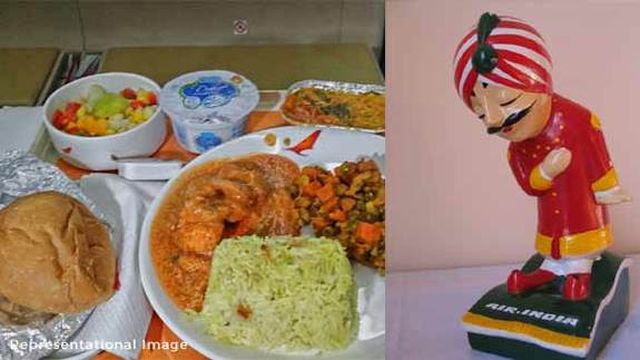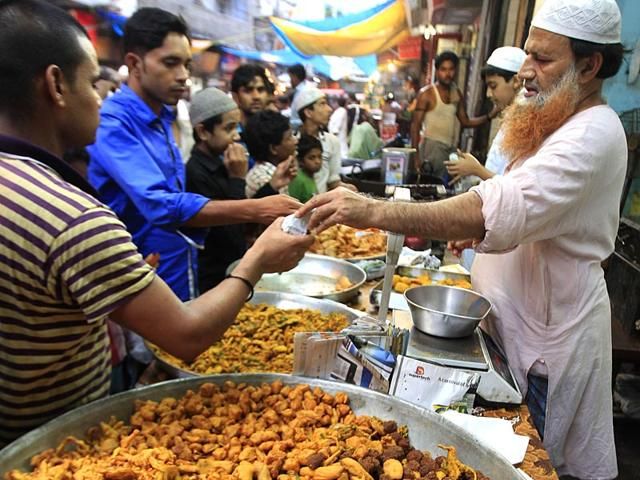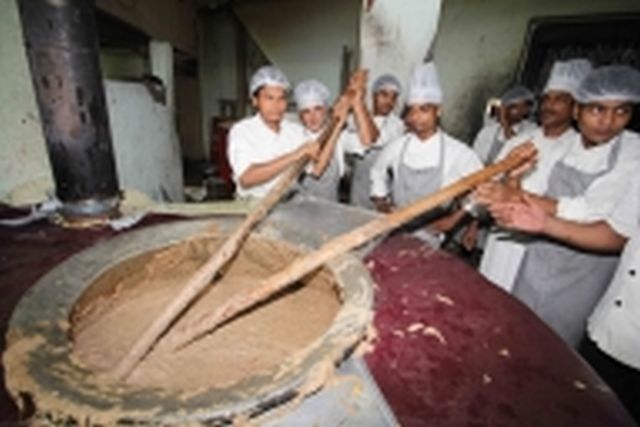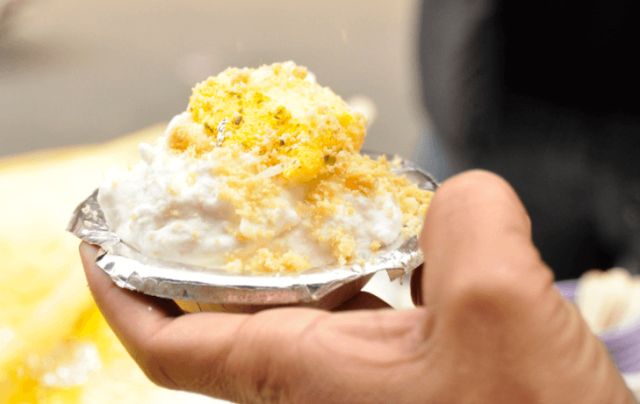
by admin | May 25, 2021 | Halal Food, Halal Industries, Opinions
 By Saeed Naqvi,
By Saeed Naqvi,
On an Air India flight from London, the hostess walked down the aisle taking orders for dinner. She leaned over and asked almost conspiratorially.
“May I serve you your Muslim meal now?”
“Muslim meal?” I asked with a start, casting a glance at my equally puzzled wife.
The hostess was embarrassed. A new detail had been added to her hospitality protocol and she was not accustomed to it.
The damage, it turned out, had been done in my office. Responding to a column on dietary preferences, the person responsible for air reservation had hunted high and low for a simple non-vegetarian meal. No such meal was listed. Then he spotted “Muslim meal”. The explanatory paragraph clarified that “all non-vegetarian meals are suitable for Muslims and are prepared in accordance with halal method”.
The journalist in me took over.
“Fair enough, you have identified us as Muslim, but surely there are others on the flight who are non-vegetarians but not Muslim?”
Of course, there are non-vegetarians on Air India but they would not accept the odium of Muslim ancestry simply to indulge their dietary preference. They want to eat meat but as thoroughbred Hindus.
Two consequences follow. Obstacles in the way of non-vegetarianism depresses the demand for non-vegetarian food. By the same token, Hindu passengers feel they are being short changed. This was reverse discrimination. They see themselves being pushed to the lower end of the culinary caste system. The demand for non-veg, therefore, gains in decibel levels: we want non-veg, that’s for sure, but one which is neither “Muslim” nor “halal”.
A three-way dietary division evolves: (1) Hindus not fussy about labels: “Muslim” or “halal” accept whatever is available. (2) Those for whom realization has been abrupt that what they have been eating for generations was “Muslim” – halal. Ignorance is bliss but not now that enlightenment has come riding on an Air India menu. (3) Simple vegetarians whose tribe, by the way, is growing by leaps and bounds in India as elsewhere face no problem whatsoever.
For the authors of the “Muslim meal” idea, the first category is the most disruptive because it has skewed the process of data collection on how potentially vegetarian or otherwise, India is. This is the key research required for advancing the aspect of Hindutva concerned with promoting non-Muslim dietary practices. If this category can stand its ground despite the disincentive of being called Muslims and halal eaters, this non-veg constituency might just stabilize, even grow. God forbid, it may come in the way of full spectrum Hindutva, vegetarianism et al.
The second category is demanding a non vegetarian meal which is unsullied by Muslim-halal connotations. This is a new demand. This clientele does not quite know what it wants; it knows what it does not want in the non-veg arena. It has clearly asked the catering department of Air India a question which is not easy to answer: what non-veg fare can you serve which is not Muslim-halal?”
Here the discussion acquires exactly the potential for which it was initiated – to polarize and, as a trial run, divide the aircraft cabin between vegetarians and non-vegetarians who, the perpetrators hope, would not like to be grouped as halal-eating Muslims. The cabin is, in this instance, a microcosm of the meat-mukt India of Hindutva’s dreams.
A quick answer to halal is jhatka, the method of severing the animal’s head with one stroke, favoured by Sikhs. The jhatka-halal debate is custom made for an Arnab Goswami show. Have a devout Sikh, a muscular Mullah and a Bajrang Bali Bhakt peer out of three windows. Extract all the gory details on jhatka and halal from the spokesmen of two distinct schools of slaughter. A possible walkout by the abstemious Bajrangi may well spur Hindu consolidation on an unprecedented scale.
On a more practical note, the “shosha” (mischief) started by AI can be put to some constructive use. A new approach to cuisine may involve drastic change: a non-veg cuisine developed over centuries as a near art form may have to be jettisoned from official banquets and national carriers. The problem will, of-course, arise when lynch mobs on the lookout for a cause, enter restaurants advertising non-veg fare. Individual non-vegetarians may also incur the wrath of the lynch mobs. In fact a malicious rumour has been floated that the monkeys that have been let loose on Delhi’s citizenry are an animal loving Minister’s project directed against non-veg addicts. The monkeys, says the rumour, are being trained on the Ridge to block entry of meat into non-veg kitchens. The producer of super hit Bajrangi Bhaijan has threatened to go on hunger strike if the avatars of Bajrang Bali are involved in operations which have anything, negative or positive, to do with meat.
The hypocrisy around the cuisine at official banquets at Hyderabad House or even the Rashtrapti Bhawan until the other day has always bordered on the pathetic. There was an insistence on tasteless fare called Mughlai food at a time when streets named after the dynasty were under assault. The banquets begin with a bogus “toast” of some flat cola. This then is a good time to take a hard look at the rampaging Vegan movement globally. Climate change, animal care, fear of artificially inflated livestock for the table is turning the world to organic, vegetarian food. Jeremy Corbyn, who may well be Britain’s Prime Minister one day, is a vegetarian.
The core idea of the Nouvelle cuisine Air India should be searching for (and not just creating communal trouble) was available in the “prasada” or “offering” cooked each day in gigantic vessels at the Dargah in Ajmer. The daily fare followed one golden principle: it should be acceptable to widest possible range of pilgrims. The “prasada” was free even of onion, garlic, mushrooms, potatoes or any vegetable which grows underground. This principle is followed in all major Hindu and Sikh places of worship. Somewhere here is the answer to Air India’s quest. To monitor strict vegetarianism in flight, a free ticket may be considered for a representative of the lynch mob on every Air India flight.
(A senior commentator on diplomatic and political affairs, Saeed Naqvi can be reached on saeednaqvi@hotmail.com. The views expressed are personal.)
—IANS

by admin | May 25, 2021 | Halal Food, Halal Industries, News
 New Delhi : Ramadan is here and so is the season of feasting on special iftar delicacies. So this season get your hands on some of the delectable recipes and add variety to your menu.
New Delhi : Ramadan is here and so is the season of feasting on special iftar delicacies. So this season get your hands on some of the delectable recipes and add variety to your menu.
Chef Kareem Ali from Le Patio, St. Regis – Al Habtoor City, Dubai and Chef Gregory Bazire from Taj Mahal Tea House, Mumbai, carefully curated two recipes hat you can easily whip up at home and keep everyone’s taste buds happy.
* Arabic Mix Grilled
* Ingredients: 80 gram lamb chop; 100 gram chicken thigh; 100 gram beef cubes; 80 gram lamb Mince Kofta; 100 gram French Fries and 50 gram Mix Pickles.
* For Marination: 2 tomatoes; 2 onions; 5 pieces roasted garlic; 2 tablespoon tomato paste; 3 teaspoon cumin Powder; 3 teaspoon coriander powder; 2 teaspoon lime juice; 2 teaspoon vinegar; 3 tea spoon salt; 3 teaspoon pepper and 1 tea spoon harissa paste.
* Garlic Sauce: ½ cup egg white; 1 cup corn oil; 5 teaspoon lemon juice; 5 pieces fresh garlic and 3 teaspoon salt
*Process: Char Grill tomato, onion and garlic, then blend the grilled items, adding all the ingredients together. Make it to a paste. In a blender put egg white, chopped garlic and lemon juice together. Gradually add oil and start blending till it gets thicker and fluffier. Add salt and adjust the seasoning as per your taste.
* To serve: Serve with french fries, garlic sauce, mix pickles and arabic bread.
* Rose Cream Falooda
* Ingredients: 20 gram sabja seeds; 15ml of your favourite rose syrup; 35 gram vermicelli for falooda; 50 gram homemade khoya rose ice cream; 4 small rose petals; 5 gram gulkhand; 40 gram Kulfi cream; 2 gram dry pomelo dices; 2 gram roasted pistachio slivers; 2 gram roasted almond slivers and few drops of rose syrup.
* In a margarita glass, pour each of the ingredients listed above according to their quantity.
* Khoya rose ice cream: 250 gram fresh cream; 250 gram milk; 100 gram khoya; 200 gram milk maid; 15 saffron stems; 5 gram pistachio flakes; 50 gram rose syrup.
* Boil milk and cream together. Add powdered khoya and milk maid and reduce to a good consistency. Add the rest of ingredients and keep the mixture in the freezer and mix it every 10 minutes to have a good consistency. Repeat the process atleast 4 times.
Add the ice cream on top of the mixture. Garnish with some rose petals, almond and pistachio slivers and serve chilled.
—IANS

by admin | May 25, 2021 | Business, Halal Food, Halal Industries, News, SMEs
 By Mohammed Shafeeq,
By Mohammed Shafeeq,
Hyderabad : The Muslim holy month of Ramadan is incomplete in Hyderabad without the lip-smacking haleem dish.
Haleem, a stew of meat, lentils and wheat mixed with spices, is preferred for breaking the fast due to its energising nature, high nutritional value and soothing porridge-like texture.
The wide range of haleem available during the season is just amazing. With a price range of Rs 30 to Rs 160 per plate, the season’s flavour is there for every pocket.
Going around this city, a fine blend of tradition and modernity, one comes across “bhattis” or brick-and-mud ovens in front of almost every hotel and roadside eatery.
Every Ramadan, the city sees a huge jump in the sale of fruits and the market is flooded with several varieties of dates, including imported ones. Stalls selling fried items and kebabs do brisk business. The special dishes of the month include dahi bade, but none comes close to haleem in popularity. It is such a craze during the fasting month that it trumps even biryani, the signature dish of Hyderabad.
It’s not just the Muslims who relish haleem during the month. A large number of customers at popular eateries like Pista House, Shah Ghouse and Sarvi are non-Muslims.
As swanky cars slow down at Yousuf Tekri in Toli Chowki, popular for several food outlets, dozens of young caterers scramble to get closer to the vehicles to take orders. Sitting in their cars, young techies, businessmen, families and even tourists can be seen relishing the piping hot haleem.
Every evening, and till the early hours of the day, traffic chaos reigns supreme on this busy road which connects to the IT hubs of Hitec City and Gachibowli.
While the situation is no different in many areas in the old city of Hyderabad, some of the central parts of the city, the chaos in Toli Chowki highlights the intense competition among leading haleem makers.
Originally an Arabic dish, haleem is said to have come here during the Mughal period via Iran and Afghanistan.
The syrupy dish was Indianised with the addition of Indian spices, dry fruits, ghee and a unique style of cooking.
Chefs with their assistants are seen engaged through the day in the laborious process of making the sumptuous dish in large vessels cemented on the bhattis. The entire cooking process spanning about 10 hours is done on firewood.
At every eatery, one can spot two or more men mixing the ingredients and pounding the meat in the vessels with large wooden poles. The pounding ensures that the mixture turns into fine paste. It is served after being garnished with special spicy shorba (meat broth), carmelised onions, coriander and slices of lemon.
Haleem comes in all variants. Mutton, beef, chicken, fish, vegetarian, you name it. Every hotel claims to have its own unique taste. Some serve the mutton haleem in their own style by topping it with fried pieces of chicken, “zaban” (goat’s tongue) and egg.
The price range suits every pocket. Small road-side eateries sell a plate (250-300 grams) of haleem (beef or chicken) for as low as Rs 30 while a plate of mutton haleem at popular food joint Pista House costs Rs 160.
The dish gained huge popularity over the last two decades thanks to Pista House, the brand which has gone global and claims to be the largest haleem maker in the world.
“When we started in 1998, we sold haleem for Rs 18 per plate,” Managing Director of Pista House M.A. Majeed told IANS. Since then its popularity has grown by leaps and bounds and this year even before the start of Ramadan, it received about 60,000 inquiries.
Pista House has tried to introduce something new every year. “This year, we have introduced whole wheat haleem. We use whole wheat grain among other mostly natural and finest quality ingredients. We use less spices. This is exactly the same way haleem is prepared in Saudi Arabia,” Majeed said.
The food joint, which secured Geographical Indication (GI) status for Hyderabadi haleem in 2010, is selling the dish at around 200 outlets in Hyderabad, Bengaluru and Chennai. Customers in other major cities in India can also get the sumptuous dish delivered at their doorstep through the Gati courier.
(Mohammed Shafeeq can be contacted at m.shafeeq@ians.in)
—IANS

by admin | May 25, 2021 | Halal Food, Halal Industries, Muslim World
 By Nurhafizah Tan
By Nurhafizah Tan
Kuala Lumpur, Malaysia : Indonesia’s implementation of the new Law on Halal Product Assurance next year to replace its current voluntary practice of halal certification, is expected to have a minimal impact on Malaysia’s halal product exports.
Malaysia External Trade Development Corp (MATRADE) Trade Commissioner to Indonesia, Naim Abdul Rahman, said he was confident Malaysia’s exports would meet the new Indonesia halal standards because they had undergone a strict process by Department of Islamic Development (Jakim).
“Jakim has mutual recognition with Majelis Ulama Indonesia (MUI), the agency which provides halal-certification at this moment, and we are working on harmonising the standard with the newly-established agency, BPJPH (Halal Product Assurance Organising Agency).
“I don’t see the impact. We want the companies to be ready from now before this law is implemented in Indonesia,” he told Bernama on the sidelines of Malaysia International Halal Showcase 2018 (MIHAS 2018) Trade Talk here today.
He said to comply with the new law the companies must work closely with the local importers to manage and regulate the market.
The Law on Halal Product Assurance requires requires products that are imported, distributed and traded within the Indonesian territory to be halal-certified.
Since the law is not effective yet, MUI still holds the authority to handle halal certification in Indonesia.
Indonesia is Malaysia’s sixth Malaysia’s largest export destination with a total value of RM1.87 billion, or 4.4 per cent, with food and beverages accounting for almost 70 per cent of Malaysia’s total halal exports to Indonesia.
MIHAS, the world’s largest halal trade show, returns for its 15th edition at the Malaysia International Trade and Exhibition Centre and will end on tomorrow.
—NNN-BERNAMA

by admin | May 25, 2021 | Entrepreneurship, Halal Food, Halal Industries, Success Stories
 By Radhika Bhirani,
By Radhika Bhirani,
New Delhi : Jamaluddin Siddique has been serving up delectable kheer cooked up with his great grandfather’s 150-year-old recipe. There’s also Khemchand Adesh Kumar, who has been selling the sweet winter delight “Daulat Ki Chaat” from his humble “khomcha” on the streets of old Delhi for the last 30 years.
Originality, legacy, a loyal customer base and word-of-mouth via social media are taking their businesses forward in times of rising inflation and rapid influx of a variety of cuisines, say Purani Dilli’s much-loved street food vendors.
“Options have increased tremendously, but true food lovers value the originality and legacy. We have been serving ‘Daulat ki Chaat’ for more than 30 years now. We have a base of loyal customers who travel from far off places just to savour this winter delicacy.
“A lot of kids and youngsters also come to us and tell us that they read about us online. So, considering the quality and legacy of our product, business sustenance is never an issue,” Kumar, who belongs to Moradabad, Uttar Pradesh, told IANS.
The “Daulat ki Chaat”, once served to the rich and the royals, is a frothy and sublime sweet made from churned milk under the moon only during the winter season.
“The soft, cottony foam is carefully collected overnight under the dew as it requires low temperature for formation and is served along with khoya and saffron fresh in the morning,” explained Kumar, who gives a plate for Rs 40.
When he is not selling his seasonal delight in peak business months from November to January, Kumar makes money with a Golgappe and Chaat stall in Burari here.
“Inflation remains a key challenge, but our customer base has always seen a positive trend. This has helped us cope with price rise,” he said, adding how foreigners find it intriguing and fancy to know about the six-hour process behind the making of “Daulat Ki Chaat”.
For Siddique, the pride in his Bade Miya Ki Kheer business comes from his belief, “We are not just serving kheer, we are serving our legacy of 150 years”.
“Richness of our ingredients and authenticity in the taste, method of preparation and presentation keep us strong in business. We are moving ahead with time and using several strategies to sell our product and combat inflation.
“There are a lot of restaurants in Delhi which buy our kheer every day from the Lal Quan shop, plate it differently, and serve to their young customers.
“This helps us in making good profits,” said Siddique, whose outlet satiates the kheer-craving of two people within Rs 250.
The kheer, he says, is made by using full fat milk, slow-cooked on a charcoal fire for almost eight hours, with rice and pure ghee. The result is a thick, creamy pudding, full of smoky aroma and a rich golden colour, and sold in dry leaf bowls.
“A lot of people ask us what is that one secret ingredienct that makes our recipe cult and we feel it’s “Allah’s blessing” that does the magic every time.”
There’s also Ram Babu Kushwaha, whose winner at his forefather’s eatery Hira Lal Chaat Corner is the “Kulle Chaat ” — scooped out potatoes and other fruits and vegetables filled with delicious stuffing, a recipe he claims to have discovered out of an experiment.
“Our clientele is getting diversified as a lot of young people keep coming to us when they read about us on social media sites. They come to our shop, make videos and click pictures of our ‘kuliya chaat’ which helps in putting a word out,” said Khushwaha.
These vendors were among around 20 old Delhi “chaat-walas” who participated in DLF Mall of India’s “Chaat Festival” in Noida last month.
“We want to introduce our legacy to the modern generation. We feel that is how it will grow. Instead of thinking that mall culture is a threat to our business, why not use them as a platform to reach out to a wider audience?” he added.
Besides, as Siddique said, it worked like a pull for people, who left with a promise to explore the culinary-rich bylanes of Chandni Chowk.
(Radhika Bhirani can be contacted at radhika.b@ians.in)
—IANS





